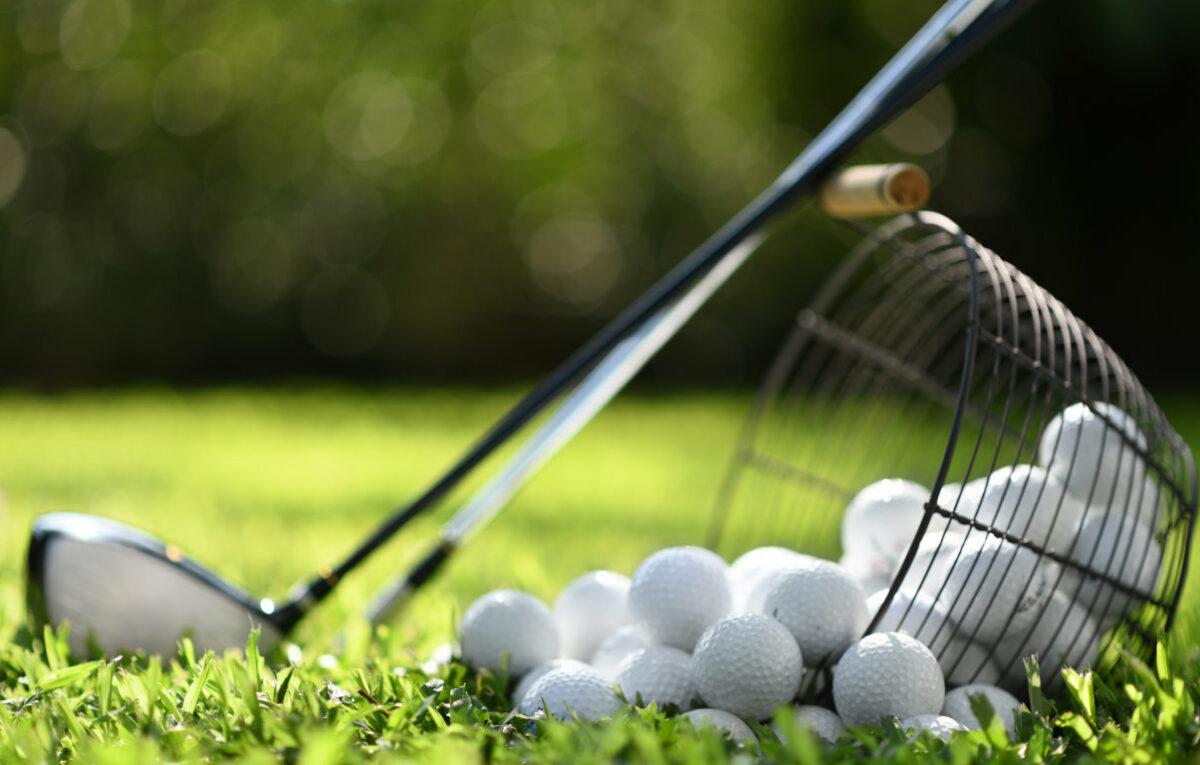What are Practice Golf Balls?
As golfers work on improving their skills, having quality balls to practice with gets extremely important.
Whether honing your swing at the driving range or putting green, you want golf balls that perform consistently for meaningful feedback.
But regular new premium balls can get expensive for high-volume practice. That led to the development of specialized practice golf balls.
What exactly are practice balls and how do they differ from regular balls for course play?
Let’s take a closer look at the construction, materials, pricing, and ideal uses for modern practice golf balls.

The Concept Behind Practice Golf Balls
The primary goal in engineering practice balls is maximizing durability to withstand repetitive strikes while maintaining performance as close to real balls as possible.
Key traits include:
- Ultra-durable covers and materials withstand thousands of strikes.
- Designed to fly similar distances and trajectories to minimize adjustment when playing regular balls.
- Significantly lower cost per ball given the high volume nature of the practice.
- Provide short-game feel and control close to regular balls.
Maximizing value and performance makes premium balls accessible for daily repetition.
Typical Construction
While specifics vary among brands, typical practice ball construction includes:
- Extremely rigid ionomer blends for the shell and core.
- Firmer thermoplastic or synthetic elastomer core compounds.
- Thicker ionomer covers at a minimum 2.5 mm thickness.
- Matte finishes that limit cosmetic and scuff damage.
- High coverage dimple counts and patterns for stable flight.
The highly durable materials ensure longevity through thousands of strikes.
Pricing Compared to Regular Balls
The greatest benefit of practice balls is the substantial cost savings per ball:
- Premium tour balls like Titleist Pro V1 – $4-5 per ball
- Standard recreation balls – Around $2 per ball
- Average quality practice balls – $0.25 to $0.60 per ball
- Good quality practice balls – $0.60 to $1 per ball
With pricing often 80% less, practice balls encourage repetition.
Brand Options
All major manufacturers now offer practice ball models:
Callaway – Warbird Practice
Titleist – Pro V1 Practice
TaylorMade – Tour Response Practice
Srixon – Soft Feel Practice
Bridgestone – e6 Practice
Wilson – Tour Velocity Practice
Nike – PD Soft Practice
Volvik – Vivid Practice
Vice – Vice Practice
Maxfli – StraightFli Practice
Plenty of choices exist for practice ball preferences.

Benefits of Using Practice Balls
Here are the main upsides of using quality practice balls:
- Cost Savings – Significantly cheaper per ball allows rapid improvement through repetition.
- Consistency – Uniform construction improves feedback versus random old balls.
- Durability – Withstand weeks or months of heavy practice striking.
- Minimal Adjustment – Retain enough performance to mimic course balls.
- Feedback – Provide a proper feel to ingrain swing adjustments through practice.
- Availability – All major brands make affordable practice models.
For improving quickly, practice balls check every box.
Limitations of Practice Balls
Practice balls do carry some inherent drawbacks:
- Short game feel can’t perfectly replicate tour-caliber balls.
- Won’t match the new-ball initial velocity off driver for true distance practice.
- Flight can be stable but not exact to regular ball trajectories.
- Cosmetics deteriorate over weeks of practice use.
While very capable, don’t expect practice balls to be identical to new models.
Ideal Practice Uses
Here are the prime applications where practice balls excel:
- Full swing repetitions off mats and grass at the driving range
- Grooving swing adjustments to improve ball striking
- Dialing in wedge and short iron distances from 50 yards and in
- Amateur lessons where feedback is more important than perfect replication
- Putting practice to enhance feel and technique
- Chipping and pitching practice around the green
- Teaching kids solid fundamentals and swing techniques
Practice balls satisfy the majority of amateur skill-building needs.
Applications to Avoid
There are some practice uses where real balls will still provide advantages:
- Perfecting precise wedge distances and shot shaping
- Fine-tuning driver distance and dialing in launch conditions
- Mastering short-game precision into firm greens
- Mimicking the exact conditions of a key shot on the course
- Tightening dispersion on iron shots requiring consistency
Once skills reach proficiency, switching to premium balls refines top-level performance.
Alternatives to Practice Balls
A few other options exist for cost-effective practice:
- Lake balls – Used premium balls fished from course water hazards. Much cheaper than new.
- Prior generation models – Older versions of premium balls are often sold at discounts.
- Surlyn distance balls – Cheaper materials but new, quality construction.
- Bulk recycled range balls – Used by facilities and then sold in bulk.
- Overruns – Cosmetically flawed models otherwise new and unbranded.
Evaluate performance and pricing to pick the right value golf balls for practice.
Maximizing Practice Ball Performance
To get the most out of practice balls:
- Choose quality models from leading brands over discount imports.
- Replace balls showing significant cuts, discoloration, or compression loss.
- Alternate practice balls with real balls to gauge the adjustment required.
- Utilize swing aids and training clubs to ingrain proper techniques.
- Focus practice on skills and techniques rather than expecting perfect simulation.
With smart practice habits, reps with practice balls quickly create lasting improvement.
Conclusion
Practice golf balls provide virtually the same feedback and playability as newer balls but at a substantially lower cost.
Their extremely durable construction withstands heavy repetition across all facets of the game from full shots to putting.
While differences in feel and precision exist, practice balls exhibit excellent performance for honing skills through volume repetition.
Their affordable pricing removes barriers to grooving proper mechanics and body positions through practice. Make practice balls a regular staple and enjoy the rapid improvement payoff.
